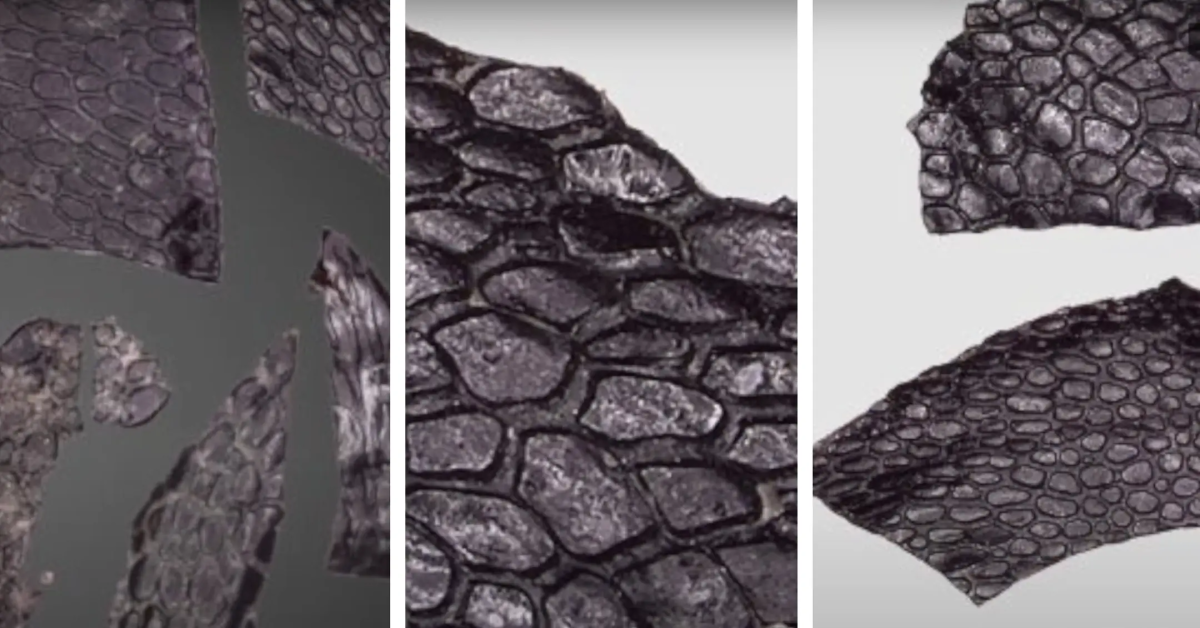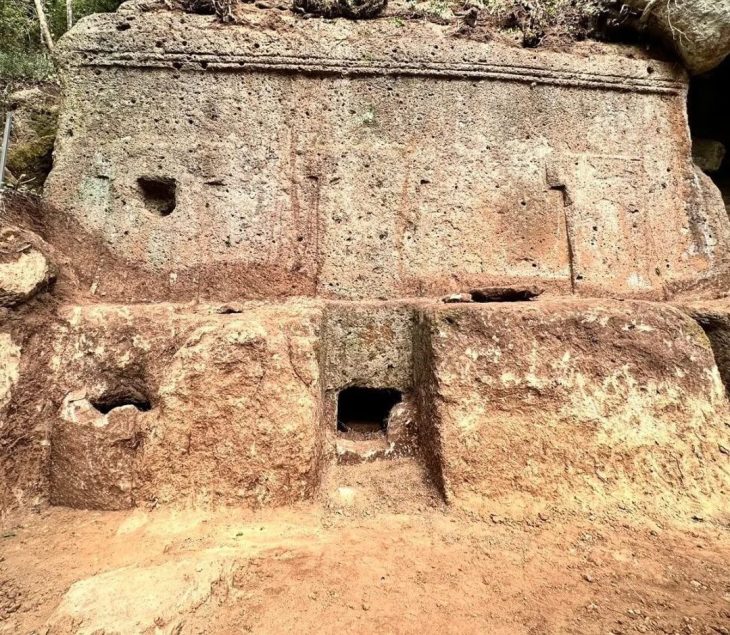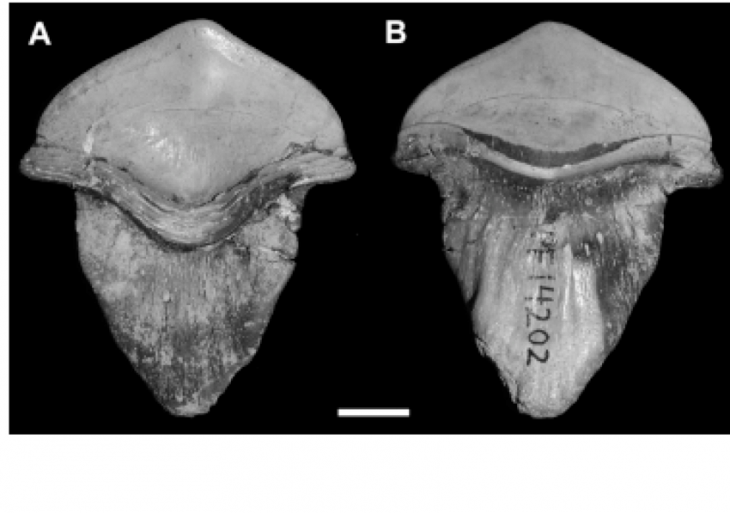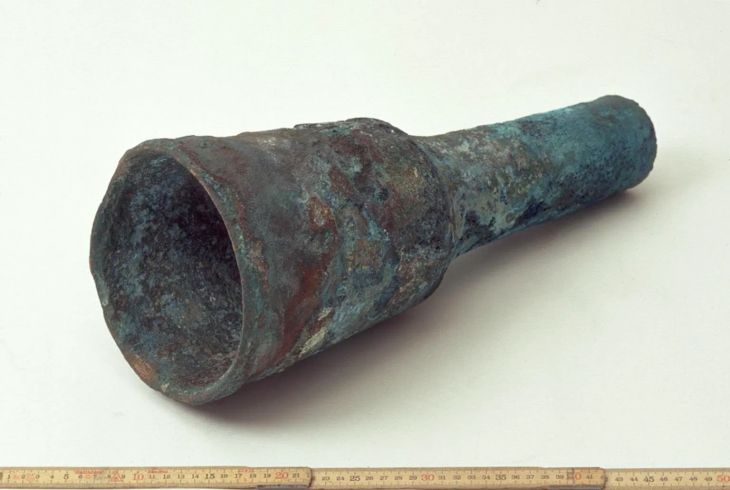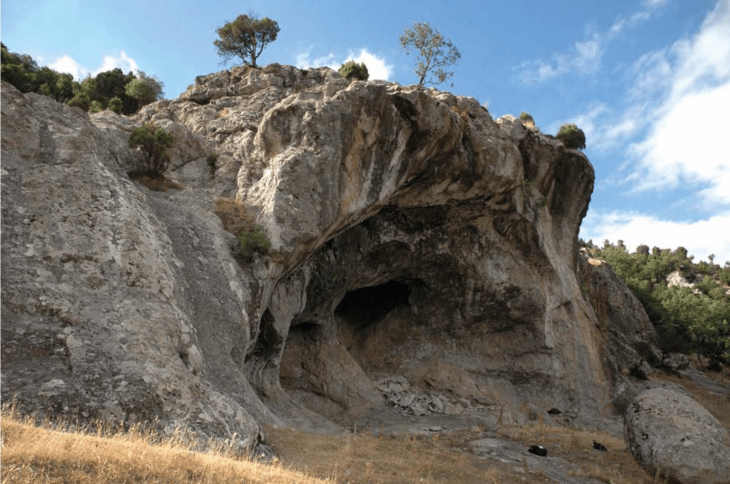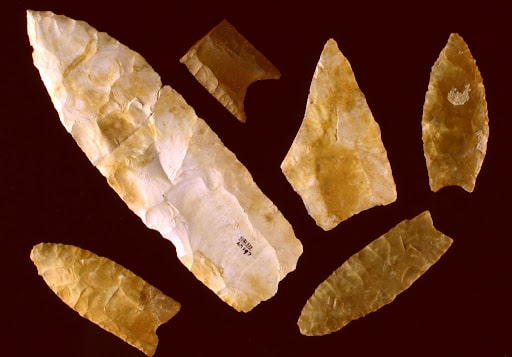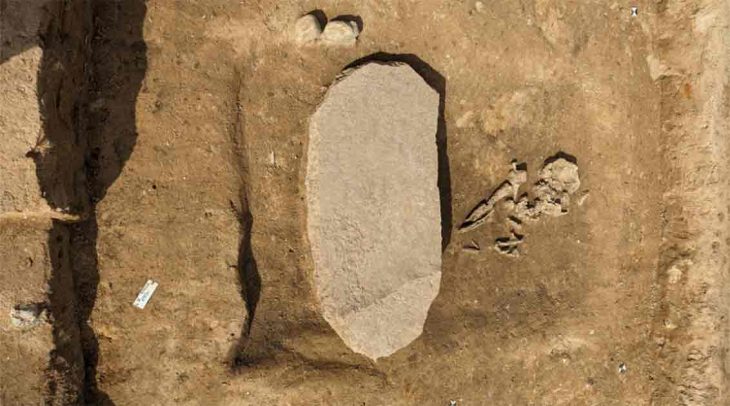Paleontologists say they’ve identified and described the oldest fossilized reptile skin ever found.
A team of paleontologists from the University of Toronto Mississauga discovered the fossilized skin of a reptile-like animal in a cave in Oklahoma. The skin fossil is estimated to be more than 20 million years older than the previous record-holder.
The finding, which is believed to be at least 286 million years old, was discovered in the Richards Spur cave system, a fascinating area of Oklahoma uniquely suited to preserve fossilized remains.
The soft tissue fossil is a rare find, made possible by a series of chance events. It provides insight into a distant evolutionary past that predates both mammals and the oldest dinosaurs.
In caves, fine sediment deposits and low oxygen levels help delay decomposition, according to lead study author Ethan Mooney, who is pursuing a master’s degree in paleontology at the University of Toronto (U of T).
The limestone caves of Richards Spur in Oklahoma contain some of the world’s most diverse and well-preserved fossils from the Paleozoic. At that time, the caves were filled with petroleum and tar from the nearby Woodford Shale, which saturated the fossils and further protected them from decay.
Richards Spur contains many fossils of Captorhinus aguti—an iguana-size, lizardlike reptile. Most specimens are skeletons, but one C. aguti fossil described in the Current Biology study retains a portion of its epidermis—the scaly outermost layer of skin made of the same keratin found in human hair and fingernails. Mooney emphasizes the importance of developing a thick, waterproof epidermis for survival on land.
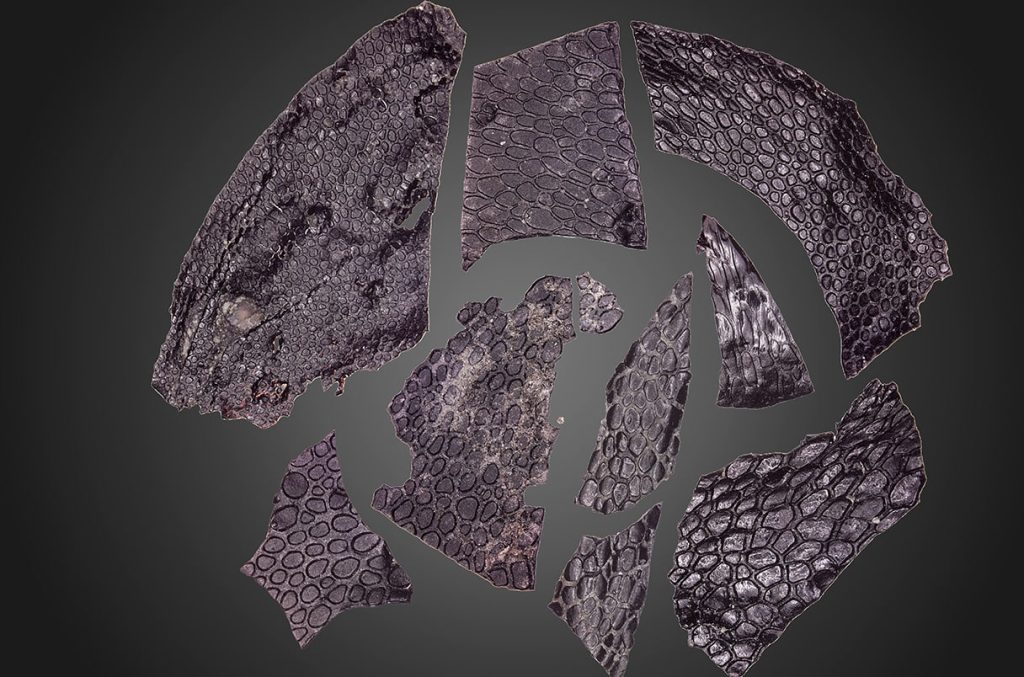
While studying these fossils, the researchers discovered a series of delicate specks that U of T biologist Tea Maho mistook for bone fragments smaller than a fingernail and as thin as a human hair. However, microscopic examination revealed that it was an exceptionally well-preserved piece of reptilian skin. The 3D fossil contains an inner dermis layer, which is rarely preserved, as well as a tough epidermis with individual bands of folded scales separated by a flexible “hinge” region with no scales, which would have allowed for growth and movement.
Though they can’t say for certain what animal the skin specimen was from, Maho and Mooney have an idea. Captorhinus aguti was a lizard-like animal known to have been common in the region during the Permian Period. It had four legs, a tail, was about 10 inches long, and had an omnivorous diet–eating insects, small vertebrates, and occasionally plants. Fossilized skeletal remains of C. aguti have been found at the same site, and aspects of the skin sample are similar to features of those larger fossils.
On top of being the oldest reptile skin ever discovered, Mooney notes the newly described specimen is also the oldest amniote skin ever found. Amniotes are the subcategory of animals that encompasses reptiles, birds, and mammals, and the finding offers insight into a key moment in animal biology.
Incredibly, the ~289 million-year-old specimen closely resembles present-day crocodile skin, according to the study. Both living crocodiles and the ancient bit of preserved epidermis have a pebble-like texture and a non-overlapping scale pattern.
Nearly 300 million years ago, “life would have looked very different,” Mooney says. But reptile skin might not have.
DOI:https://doi.org/10.1016/j.cub.2023.12.008
Cover Photo: A visual collage of skin fossils described in the new study. The mummified skin specimen is shown sliced into two pieces in the center-left of the image. The surrounding specimen scans are of fossilized skin impressions. Current Biology, Mooney et al.

